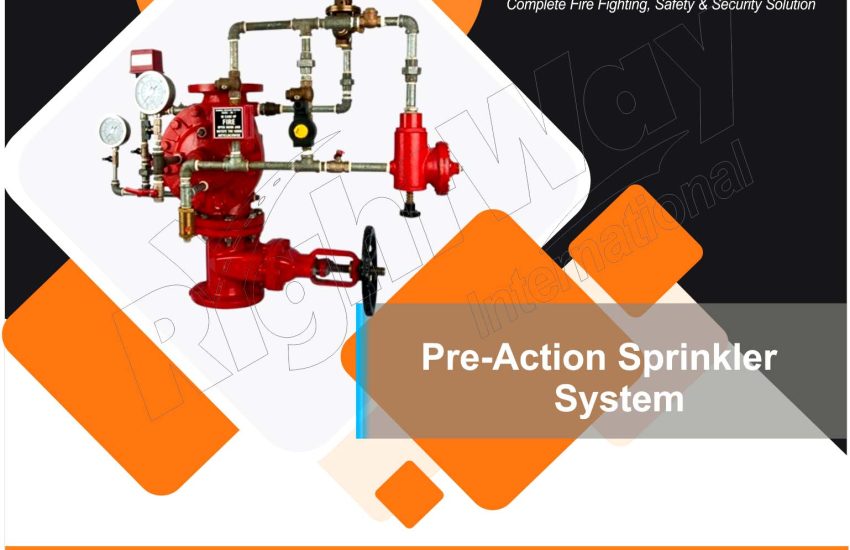Pre-Action Sprinkler System is a specialized fire protection system that combines features of both wet and dry sprinkler systems. It is designed to provide increased protection against accidental discharge while ensuring rapid response in the event of a fire. This system is commonly used in areas where water damage from a sprinkler activation could cause significant loss, such as data centers, museums, and warehouses with valuable inventory.
How Does a Pre-Action Sprinkler System Work?
- Detection: The pre-action system utilizes a fire detection system, such as smoke or heat detectors, to identify a fire’s presence. Unlike traditional systems, the sprinkler heads remain closed until the detection process is complete.
- Activation: When a fire is detected, the detection system activates the pre-action valve, allowing water to flow into the sprinkler piping while keeping the sprinkler heads closed.
- Sprinkler Operation: If a fire continues to grow and causes enough heat to trigger one or more sprinkler heads, those heads will open, allowing water to discharge directly onto the fire. This two-step process significantly reduces the likelihood of accidental water damage.
Components of a Pre-Action Sprinkler System
- Pre-Action Valve: Controls water flow into the system and is activated by the fire detection system.
- Sprinkler Heads: Typically closed until activated by heat from a fire, providing targeted coverage.
- Detection System: Consists of heat and/or smoke detectors that trigger the pre-action valve.
- Piping: A network of pipes that carries water from the pre-action valve to the sprinkler heads.
Applications of Pre-Action Systems
Pre-action sprinkler systems are ideal for:
- Data Centers: Protecting sensitive electronic equipment from both fire and water damage.
- Museums and Art Galleries: Safeguarding valuable artifacts and artwork.
- Cold Storage Facilities: Areas where water damage could ruin perishable goods.
- Telecommunications Facilities: Protecting critical infrastructure from fire while minimizing water exposure.
Advantages of Pre-Action Sprinkler Systems
- Reduced Risk of Water Damage: The system is designed to prevent accidental activation, making it suitable for environments where water exposure is a concern.
- Faster Response: Once the pre-action valve is activated, water is immediately available to the sprinkler heads, allowing for quicker firefighting efforts.
- Versatile: Can be tailored for different environments and risks, offering flexibility in design.
Challenges and Considerations
- Maintenance Requirements: Regular testing and maintenance of both the detection system and the pre-action valve are critical for effectiveness.
- Complexity: More complex than traditional sprinkler systems, requiring trained personnel for installation and maintenance.
- Initial Cost: Generally higher upfront costs compared to standard systems due to the advanced technology involved.
Conclusion
Pre-action sprinkler systems offer an effective solution for protecting valuable assets in high-risk environments. By combining the benefits of both wet and dry systems, they minimize the risk of accidental discharge while providing a rapid response to fire emergencies. Understanding the system’s operation, components, and applications is essential for anyone involved in fire protection planning and implementation. Regular maintenance and proper installation are key to ensuring the system’s reliability and effectiveness.


